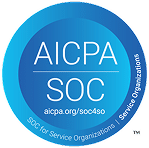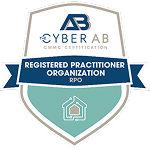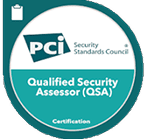The healthcare industry must protect patients’ data from threats like data breaches. HITRUST’s Common Security Framework (CSF) helps healthcare organizations enhance security, privacy, and risk management. The framework guides compliance processes and risk management, and HITRUST certification demonstrates robust security measures.
In this blog, we’ll explore HITRUST certification requirements, the steps involved in obtaining certification, and why it’s crucial for healthcare organizations.
What is HITRUST Certification?
HITRUST certification is a validation process that ensures an organization meets the stringent requirements of the HITRUST CSF. This comprehensive framework is designed to help organizations effectively manage risk and comply with various regulatory and industry standards.
The HITRUST CSF integrates a wide range of regulatory requirements, standards, and best practices, including the National Institute of Standards and Technology (NIST), the Health Insurance Portability and Accountability Act (HIPAA), the Payment Card Industry Data Security Standard (PCI DSS), the General Data Protection Regulation (GDPR), the International Organization for Standardization (ISO) 27001, among others. This integration creates a unified, scalable, and certifiable framework that addresses the healthcare industry’s information security and privacy challenges.
Therefore, the HITRUST certification signifies that an organization has implemented comprehensive security controls, conducted rigorous risk assessments, and adhered to industry-leading standards. This recognition should make your organization feel proud and accomplished.
What Type of Businesses Require HITRUST Certification?
HITRUST certification is essential for any organization that handles sensitive health information, especially those operating within the healthcare ecosystem. Those include, but are not limited to:
- Healthcare Providers: Hospitals, clinics, and private practices must protect patient data and comply with HIPAA regulations. Ensuring the security and privacy of patient health information is critical to maintaining trust and avoiding legal penalties. HITRUST certification helps these providers demonstrate their commitment to safeguarding patient data and meeting stringent regulatory requirements.
- Health Plan Services: Insurance companies and health plan providers must secure member data and demonstrate compliance with various regulations, including HIPAA. Achieving HITRUST certification ensures that health plans implement robust security measures to protect sensitive information and confidently navigate the complex regulatory landscape.
- Healthcare IT Vendors: Software and IT service providers for healthcare must ensure their solutions meet security standards, including HITRUST certification to protect sensitive data.
- Business Associates: Third-party service providers handling protected health information (PHI) for covered entities must comply with HITRUST requirements. This includes billing companies, cloud service providers, data analytics firms, and other vendors. HITRUST certification helps them demonstrate compliance with HIPAA and other relevant regulations, strengthening their relationships with healthcare clients.
- Pharmaceutical Companies: handle sensitive patient data during clinical trials and research. HITRUST certification ensures that pharmaceutical companies implement strong data protection measures, safeguarding participant information and ensuring compliance with regulations.
- Medical Device Manufacturers: Medical device companies must ensure the security of their products, especially those connected to networks or storing patient data. HITRUST certification helps demonstrate robust security measures for protecting patient data and device integrity.
- Long-term Care Facilities: Nursing homes, assisted living facilities, and other long-term care providers handle significant amounts of PHI. Achieving HITRUST certification ensures that these facilities have appropriate measures to protect sensitive resident information and comply with regulatory requirements.
- Telehealth Providers: Telehealth providers must prioritize secure virtual consultations and remote monitoring solutions. HITRUST certification helps demonstrate their commitment to protecting patient data and complying with regulations.
- Health Information Exchanges (HIEs): Organizations facilitating the sharing of health information must ensure security and privacy. HITRUST certification provides a framework for implementing robust security measures to exchange health information safely.
Requirements For Achieving HITRUST Certification
Achieving HITRUST certification involves meeting specific requirements across 19 domains:
- Information Protection Program: The network must implement processes to ensure the integrity, confidentiality, and privacy of sensitive data. These requirements should be reflected in the Information Security Management System (ISMS).
- Endpoint Security: Endpoint security is a comprehensive term for systems designed to combat viruses and malware. It includes intrusion detection systems, patches, firewalls, and software updates, as well as requirements for laptops, workstations, servers, and storage facilities.
- Portable Media Security: Portable media can be easily moved in and out of workplaces, posing security risks. This control domain oversees the security of mobile storage devices such as CDs, USB drives, external hard drives, DVDs, and backup tapes.
- Mobile Device Security: A separate control domain is designated for devices that can access your network, like tablets, smartphones, and laptops, which have additional functionalities and can be easily transported.
- Wireless Security: Most workplaces have internal or guest wireless networks. This control domain addresses all aspects of wireless security but does not include the protection of devices that connect to these networks.
- Configuration Management: This control domain encompasses change control, configuration audits, identification of configuration items, configuration status accounting, and environments for testing and development.
- Vulnerability Management: This control domain includes vulnerability scanning, patching, antivirus software, anti-malware, and network host-based penetration detection systems.
- Network Security: This control domain covers application-level firewalls, intrusion detection systems, DDOS protection, and IP reputation filtering at the network level.
- Transmission Security: This control domain focuses on the security of internal transmissions within your company. Unchecked network and web connections, such as email, VPN, and chat messages, can be easily accessed.
- Password Management: Most employees use passwords to access accounts, and this control domain ensures the integrity and security of those passwords.
- Access Control: This control domain covers methods by which employees access your network without traditional passwords.
- Audit Logging and Monitoring: Audit logging and monitoring are crucial for documentation. This control domain addresses all aspects related to these processes.
- Education, Training, and Awareness: Employee education is vital for risk mitigation. This control domain includes awareness campaigns for general users and training for security personnel.
- Third-Party Assurance: Third-party vendor risk is a significant emerging threat. This control domain addresses risks posed by third-party vendors in relation to your systems.
- Incident Management: Monitoring and managing breaches are critical to business integrity. This control domain includes incident monitoring, detection, response, and reporting protocols.
- Business Continuity and Disaster Recovery: It’s essential to have a plan for disasters or natural catastrophes to continue operations and recover from losses. This control domain covers contingency planning, testing, and implementation of these procedures.
- Risk Management: Risk management is a crucial component of the GRC framework. This control domain handles risk analysis, assessment, and management.
- Physical and Environmental Security: While most control domains focus on digital security, physical data storage also requires protection. This control domain covers environmental security requirements for data storage centers and other facilities that handle sensitive information disposal.
- Data Protection and Privacy: This control domain emphasizes privacy protocols to comply with laws penalizing companies for mishandling critical digital data.
Readiness Assessment
The journey to HITRUST certification begins with a readiness assessment, which involves several key actions:
- Evaluating Security Posture: Assess an organization’s current security measures against the HITRUST CSF requirements.
- Identifying Gaps: Pinpointing weaknesses in enterprise security controls and processes.
- Planning for Improvement: Develop a strategic plan to address identified gaps and strengthen your security framework.
- Preparation for Certification: Ensure your organization is fully prepared for the formal certification.
Remediation
The remediation phase is crucial for addressing identified deficiencies following the readiness assessment. This involves:
- Implementing Changes: Ensuring necessary adjustments to rectify gaps discovered during the readiness assessment.
- Updating Policies and Procedures: Revision of organizational policies, procedures, and security controls to align with HITRUST CSF requirements.
- Education and Awareness Training: To ensure awareness and compliance, all staff members will receive continuous education and awareness training on new security protocols.
Validated Assessment
Once remediation is complete, your organization will undergo a validated assessment by an authorized external HITRUST assessor. This comprehensive evaluation includes:
- Documentation Review: The assessor will examine documentation and evidence of your security controls and processes.
- Personnel Interviews: Key personnel will be interviewed to verify compliance with HITRUST requirements.
- Effectiveness Testing: Security measures will be tested and validated for their effectiveness.
How Long Does it Take to Become HITRUST Certified?
Most organizations take seven (7) to eighteen (18) months or more to achieve HITRUST certification. The duration depends on various factors, such as the size and complexity of the organization, the type of HITRUST assessment (e1, i1, or r2) being sought, and the level of leadership engagement.
Key factors that impact the timeline for achieving HITRUST certification include:
- Organization Size and Complexity: Larger and more complex organizations may require additional time for assessment and remediation.
- Initial Security Posture: Organizations with solid security measures may have fewer gaps to address, reducing the remediation phase.
- Resource Allocation: Dedicated resources and effective project management can speed up the process and ensure the timely completion of each phase.
- External Factors: The availability of authorized external HITRUST assessors and the time HITRUST takes for the final review can impact the timeline.
Conclusion
HITRUST certification is more than just a compliance checkbox; it’s a strategic investment for long-term success and reputation. Obtaining HITRUST certification allows organizations to reduce cybersecurity risks by implementing robust security controls, conducting thorough assessments, and diligently following the certification process.
Although the certification process may vary in duration and complexity, organizations can simplify their journey by prioritizing readiness assessments, addressing identified gaps through remediation efforts, and working closely with authorized external HITRUST assessors like 360 Advanced.








